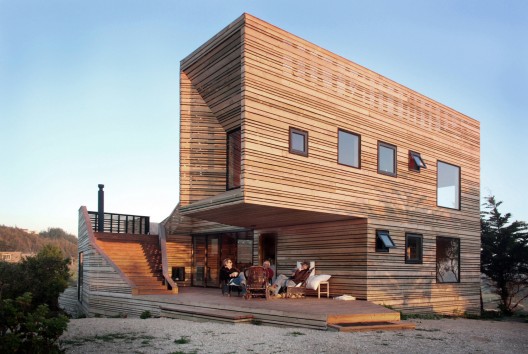











The building although architecturally very typical of Disney’s fantasy image, received mixed reactions from the public. This was not uncommon of Gehry’s work. He was known as a deconstructist architect because of his designs apparently lacking an influence and being inappropriate for it’s purpose. Many said it was a beautiful sculpture but not functional as building. Thanks to the assistance of acoustic expert Yusahisa Toyota, the large concert hall was a masterpiece of acoustic brilliance. Perfectly balanced and with all aspects accommodated for, so much so that anyone not immediately in the concert hall hears very little of the performances. This along with highly polished mirror-like panels throughout the concave sections of the walls and fine hardwood paneling made for a creative contrasting interior to the building.
The exterior of the building is composed of stainless steel exterior virtually wrapping the entire building and appearing similar to castle battlements, in inner construction shape is also curved slightly with top and bottom forms extruded beyond the exterior designs. This collection of features is consistent with the Californian 'funk' art movement of the 1960's-70's, this movement was pure Gehry using non-traditional methods of building and surface materials. Due to the curves and matte stainless steel materials used during the height of the Californian sun the hall easily out shines its surrounding architecture to appear magical in a way. This initially came at a price as the reflections from the exterior walls sometimes shone back inside the rooms within the structure and at such close range it made the rooms overly bright and hot. Computer technology was brought in to evaluate the rooms and solutions were achieved
http://www.laphil.com/about/wdch_overview.cfm
http://www.architectureweek.com/2003/1217/design_1-1.html
http://www.arcspace.com/architects/gehry/disney2/
Symphony: Frank Gehry's Walt Disney Concert Hall
F.Gehry October 2003 Abrams,Harry N Inc



 Architects: KWK PROMES
Architects: KWK PROMES




Project: Metamorfosis 1, Renovation of a wooden house
Location: Tunquén,Casablanca, Chile
Architects: Renewal ( 2008) José Ulloa Davet, Delphine Ding
Original House (1990): Pedro Salas
Construction Supervision: Danio Ulloa Azocar
Engineering: Teknoingeniería Ltda
Carpenter: Pablo Montoya
Project year: 2007-2008
Photographs: José Ulloa Davet
Dubbed Metamorphosis 1, the house has been renovated as a two-level, single volume unit using the walls of the former construction as its structural frame. The spaces have been reorganized in a helical path, extending both the usable indoor and outdoor living spaces. Along the curving path, two panoramic terraces and an elongated sheltered deck have been added.
The façade itself has been rhythmically clad in 2, 4 and 6 inch wood slats making the house appear almost as a natural extension of the existing landscape – airy and serene, strong yet soft – as if it were always meant to be, aging to perfection. The choice implementation of wood on the outside of the structure also serves to reduce the visual mass of the 2-level house, which at nearly 2,000 sq ft can hardly be considered small. But it’s not just about appearances. Keeping in mind the environmental stress caused by the proximity of the ocean, the wooden skin was consciously designed to aerate and deflect the accumulation of water and moisture in the structural walls.



















